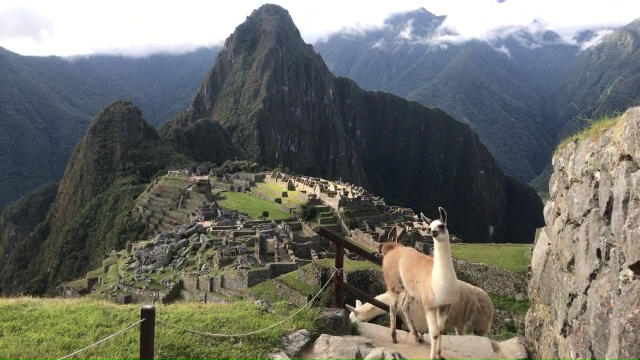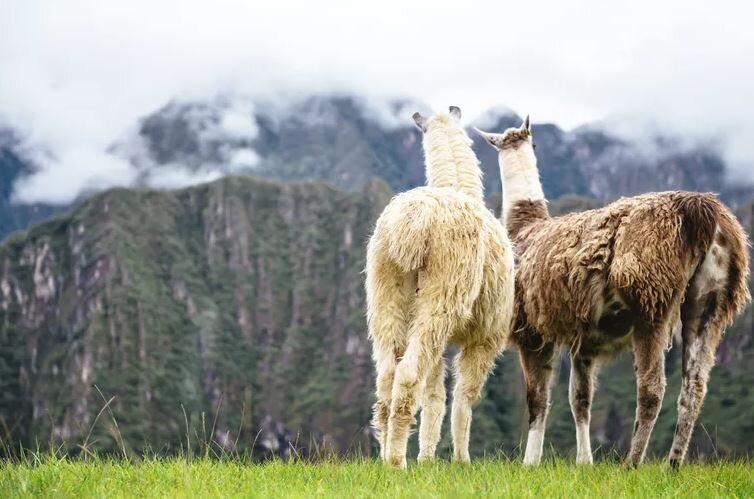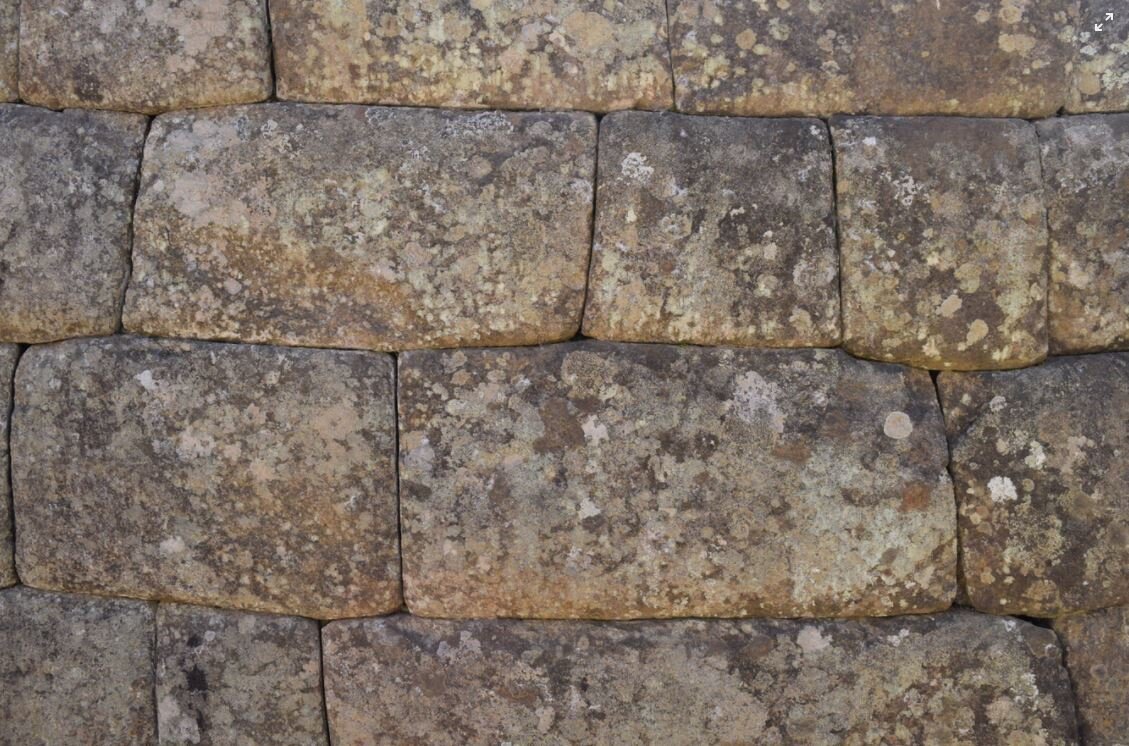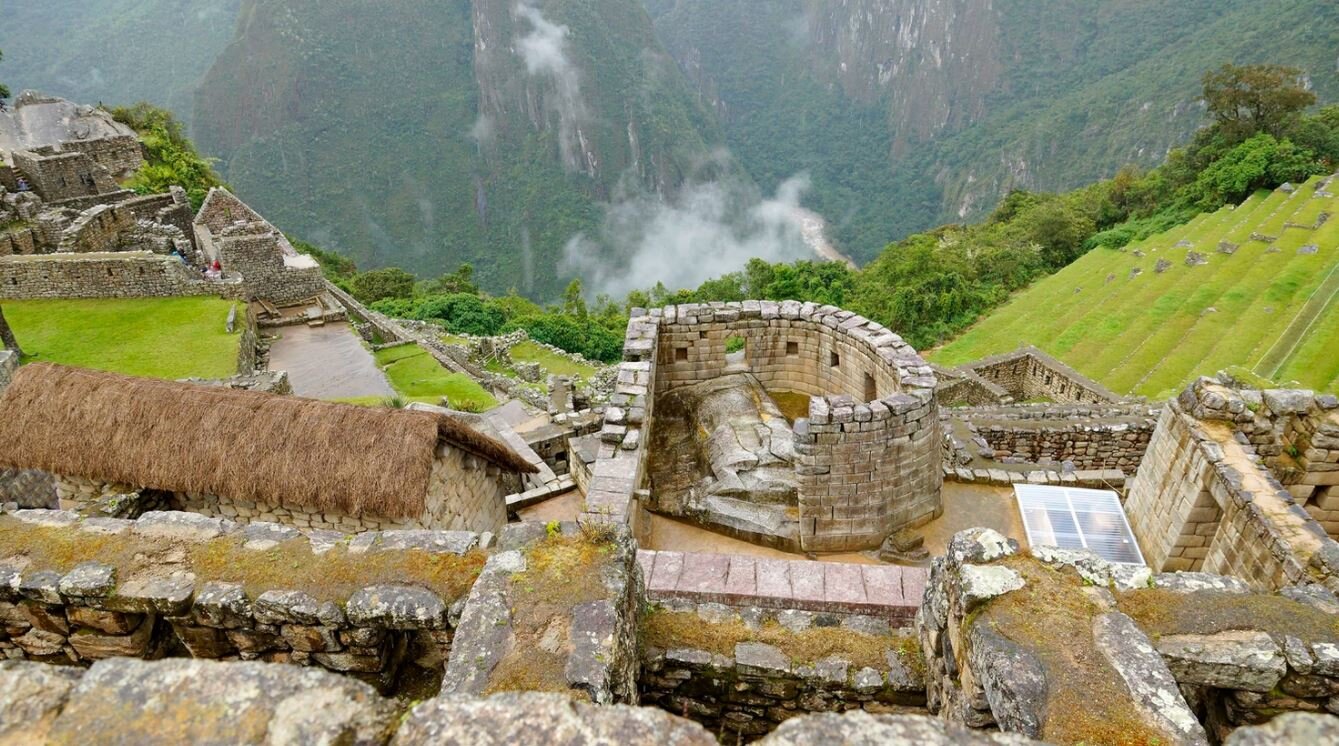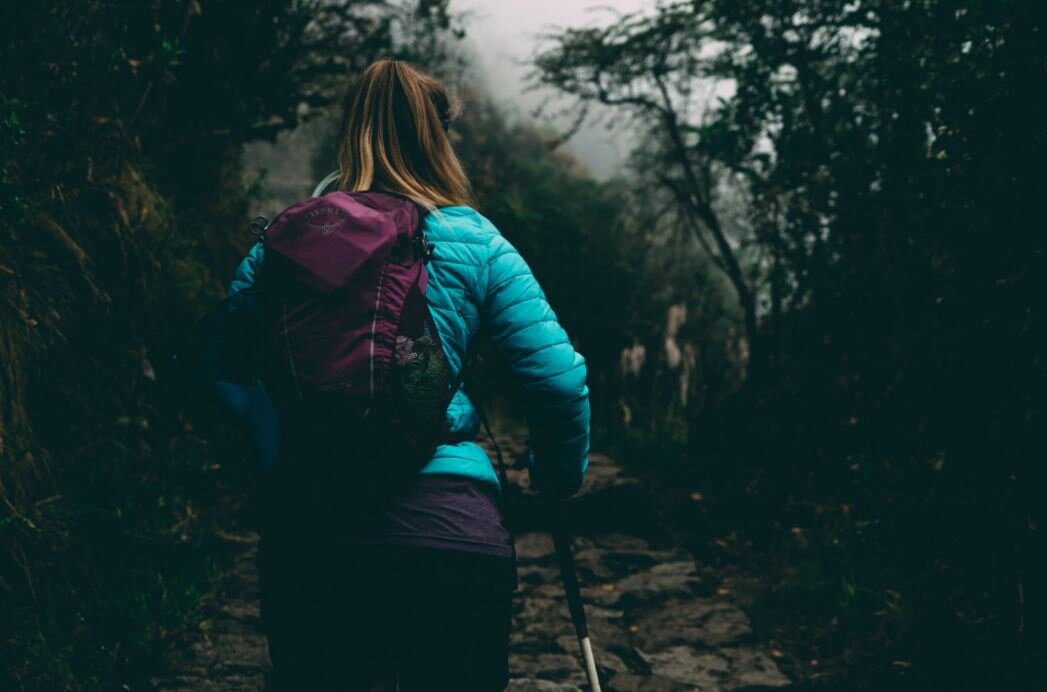10 Fascinating Facts about Machu Picchu
Named as one of the seven New Wonders of the World in 2007, Machu Picchu might be high on your travel bucket list to visit. You will be happy to hear that once you reach this stunning UNESCO World Heritage site, either by train or by hiking the famous Inca Trail, it does not disappoint!
It is an exceptional example of Inca perfectionist construction, and stonework craftmanship. Built at the height of the Inca civilization’s power in the 15th century, it is beautifully and mysteriously set deep within the majestic Andes mountain range at 7,000ft above sea level (which is actually at a lower altitude than Cusco city). Yet as famous as it is, it is also still one of the least understood archaeological sites in the world.
Here are 10 fascinating facts we do know!
1. The name is not Machu Picchu, and it can also not be called the “lost” city of the Incas
We all know it now as Machu Picchu and this is thanks to Hiram Bingham, the American explorer that in his 1911 expedition came across the Inca site and initiated its scientific study that made it world famous. He was not looking for it, however. Instead, he wanted to find Vilcabamba, the last Inca village used as a refuge from the Spanish conquest in 1572. As he was traveling through the Urubamba Valley, Hiram Bingham asked locals if they knew of any old ruins nearby. It is an indigenous farmer, Melchor Arteaga, that then directed him towards Machu Picchu in his native language. But in fact, what Machu Picchu seems to mean in this ancient language is “old mountain” or “old peak”, and it refers to the mountain just in front of the citadel.
The mountain just behind the citadel that you can clearly see in all the classic postcard photos is called Huayna Picchu, which means young mountain, and you can climb to the top of it in about 45 minutes with stunning views and an Inca temple along the way.
One of the very first pictures of Machu Picchu - image credit: Hiram Bingham and National Geographic (1911)
So, what did the Incas actually name this city? There are some theories, but nobody really knows. Hiram Bingham wrote his book “The Lost City of the Incas” based on his findings, but many of his theories have been disproven since then. And as there were many people living in the area that knew about the site before Hiram Bingham made it famous worldwide, we cannot really claim it was ever lost.
2. The construction is 75% original, one of the most well preserved archaeological sites of its time
When the Spanish arrived in Peru in the 15th century, they destroyed a lot of the Inca constructions and sacred sites during their conquest, building Catholic churches on top. One of the reasons that we can visit and marvel at such a well preserved, archaeological gem of a citadel today is because the Spanish never found it. This is partially due to its remote location, but there is also evidence that the Incas themselves, as they abandoned the city, burned some of the constructions and paths around so that it was not so easily spotted.
During Hiram Bingham expeditions in the early 1900s, he found Machu Picchu covered by a lot of the forest vegetation which needed to be removed. Unfortunately, this led to some constructions collapsing. It was then discovered that the over 600 terraces below the citadel were built to stop it from sliding down the mountain. Such incredibly advanced structural engineering for that time!
Therefore, what we can visibly see today of Machu Picchu is only about 40% of its entirety, and the rest remains covered by the vegetation to try and preserve it as best as possible. Since the early excavations, there have been some restorations and very limited reconstructions, but it remains one of the best preserved archaeological sites of its time at about 75% original.
One of the very first pictures of Machu Picchu covered by vegetation - image credit: Hiram Bingham and National Geographic (1911)
3. Above Machu Picchu is a “no-fly” zone
In the ‘70s and ‘80s there were two occasions when the Peruvian government removed a large monolith stone to allow a helicopter to land at Machu Picchu (once for the Spanish king and queen to visit, and once for a meeting of Latin American leaders) which unfortunately led to the stone being irreparably damaged and removed permanently. That is one of the reasons why there’s now a no-fly zone above Machu Picchu.
Other strict regulations introduced include a daily ticket limit (2,500 tickets per day), limited timeslots, and a one-way walking system in order to reduce and control foot traffic, and keep tourism sustainable. On our Machu Picchu Regulations page you’ll find out all the details about what rules you must follow when visiting Machu Picchu.
Where once a helicopter landed at Machu Picchu, now forbidden
4. It is located deep in the beautiful cloud forest
Winay Wayna orchid (Forever Young) one of over 300 species in the cloud forest
Speaking of the vegetation, Machu Picchu is surrounded by the cloud forest (also called high jungle) and people are usually quite surprised to find themselves in lush, beautiful, green flora as impressive as the citadel itself. The cloud forest boasts a large variety of plants, insects, and other animals, as well as over 300 species of orchids.
If you choose to hike the ancient pilgrimage to Machu Picchu via the Inca Trail, you will discover more of this region’s incredible biodiversity as you journey through mountain passes, valleys, and several unique micro-climates. Alternately, visitors to the site can easily take a train to Machu Picchu town (Aguas Calientes) before boarding a bus which heads directly to the citadel, making the site accessible for all ages and abilities.
5. The spectacled bear can be spotted here!
Rare spectacled bear spotting on the Inca Trail by our founder Mike
If you are lucky, you will be able to spot the spectacled bear (Andean bear or Tremarctos Ornatus) at Machu Picchu or along the Inca Trail. It is the only bear species that can be found in South America and is considered vulnerable by the IUCN (with an estimated population of between only 2,500-10,000), but they have on very rare occasions been spotted roaming freely close by the citadel. Typically, this is around 4pm or later, as it is quieter near closing time, and they stay only a few minutes before they return deeper into the cloud forest. Their especially love bromeliads as part of their diet, which can be found plenty in this area.
Animals that people do expect to see are llamas, and you can indeed find plenty of them wandering around Machu Picchu. Though these are now domesticated animals that you would not normally find here (in the wild they prefer altitudes above 13,000 feet / 4,000 m). They are being kept here to entertain the tourists – and they are quite used to them so you can take cool selfies with the llamas (just be aware that if annoyed the worst thing they can do is spit). Llamas were also very important to the Incas, and they would have lived there as their domesticated animals back in their day too. Some of the constructions are said to be shaped like a llama, and llama bones were found at the sacrificial temples inside.
6. Each stone was cut so precisely that the most sacred constructions were built without the use of mortar
The Incas had knowledge of incredibly advanced construction and stonework techniques, and when you visit Machu Picchu, you will be able to see just how impressive and organic their constructions were. It is almost like they were painting, but with rocks, as they followed the natural shapes and curves of the mountains and landscapes (rather than cutting through as we would nowadays).
One of the techniques they used in the most sacred, elite structures (Inca Imperial constructions) is known as ashlar. The Incas perfected this by cutting pieces from the large white granite rocks in certain areas at Machu Picchu (some call it the quarry) and polished and carved the stones in the right shape to fit together exactly and very tightly without the use of mortar or clay (you could not even fit a blade or thin piece of paper in between). Keep in mind they had no modern tools for cutting and moving the stones. Some weigh over 55 tons!
They often also built constructions around impressive rocks, again an example of organic construction. Most of the staircases were carved from one slab of stone!
This technique makes the constructions much more earthquake resistant than for example most modern buildings today, and earthquakes do happen often in Peru. It allows for the stones of the dry-stone walls to move slightly and resettle without any walls collapsing. Also, the trapezoidal design of the doors and windows help make it a much more solid, long-lasting construction. In fact, right underneath where Machu Picchu was built run several fractures or tectonic fault lines, and amazingly, there’s evidence that the Incas knew this and expertly avoided building right on top of these small fissures.
7. It was used for astronomical observation
Incredibly, the Incas had plenty of knowledge about the position of the sun, the moon, and the stars. We can see evidence of that at Machu Picchu where constructions align exactly to these positions at important times of the year.
Twice a year at the equinoxes, the sun sits directly above the sacred Intihuantana stone at Machu Picchu, so there is no shadow. This is also the stone that was used by the Incas as an astronomical clock and calendar. And at dawn on 21 June, when the first sunlight rises above the mountains, the light shines perfectly through one of the windows of the Temple of the Sun, illuminating the ceremonial stone inside. The Inca considered the Sun to be their father, and the Moon to be their mother.
Temple of the Sun at Machu Picchu where the first light on 21 June hits the window exactly
This is called archaeoastronomy, and besides for worshiping practices and ceremonies to celebrate the Pachamama (Mother Earth), it helped the Incas to identify the best time for planting and harvesting.
8. There was a long dispute between Peru and Yale University over the ownership of the artifacts found at Machu Picchu
Photo credit: Yale University
As part of his expeditions in cooperation with the Yale University, Hiram Bingham and his team collected over 5,000 artifacts including pottery, necklaces, human bones and much more at Machu Picchu. We must admit that Peru at the time did not have the right equipment to research and preserve the items adequately. But some time after that, a longstanding dispute started between the government of Peru and the Yale University. Yale University claims they own the items, while Peru insists that they were given on loan. But finally, the Yale University agreed to return all the artifacts to its native land in 2012.
9. Up to 1,000 people lived in Machu Picchu
An estimated population of between 300 and 1,000 people lived here during the 1400s according to historians and archaeologists, but they also found evidence that the area where Machu Picchu was built was used for agriculture as far back as 760 B.C.! Most of the population here were part of the highest social class, the Inca nobility. According to early DNA analysis by U.S. osteologist George Eaton, about 135 skeletons were found and nearly all of them were female. However, this theory was also debunked, and later research with more advanced technology confirmed that the population were about half males and half females.
10. There are several Machu Picchu hiking options
The most famous hike to Machu Picchu is the Inca Trail, but there are several alternative hikes that are beautiful in their own right. These are especially great options to consider when the Inca Trail is sold out (permits are extremely limited and best booked 6 months in advance - find out more about availability) or in February when it is closed for maintenance. On these alternative hikes it is possible to travel with horses to help lighten the load.
There is the Quarry Trail, a beautiful 4 days & 3 nights trek through the Andes mountains with many Inca archaeological sites along the path.
The Lares Trek is another 4 days & 3 nights hike through various beautiful landscapes like snow-capped mountains, green valleys, and archaeological ruins.
The Salkantay Trek takes 5 days & 4 nights, and is an amazing hike that covers high, snow-covered Andes mountains, a stunning turquoise lake (Humantay Lake) and a dip in thermal waters.
Only the Classic (4 days/3 nights) and Short (2 days/1 night) Inca Trail lead directly into Machu Picchu through the sun gate though, for the other hikes you would still need to take a train and a bus to reach Machu Picchu. You don’t have to hike to get to Machu Picchu though, it is easily accessible by train – it’s about a 5 hour journey from Cusco.
For those looking for a much shorter hiking challenge, it is also possible to climb Huayna Picchu, the mountain just behind the Machu Picchu citadel, and the Machu Picchu mountain itself. Huayna Picchu takes about 45 minutes to hike, and you’ll be rewarded with stunning views and several Inca surprises along the way including a temple.
More info about the Inca Trail and up-to-date availability in our FAQ: Inca Trail Info and Availability.
When is the best time to visit Machu Picchu or hike the Inca Trail? Find out in our month by month overview.
Did you know that you can visit Machu Picchu virtually from the comfort of your couch, guided live by a professional guide? See our virtual tours of Machu Picchu and more.
Our founder Mike live streaming a guided virtual tour from Machu Picchu
Ready to start planning your trip to Peru? Get in touch!


